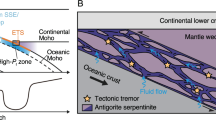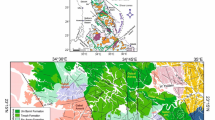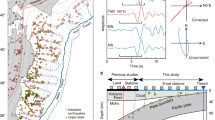Abstract
THE wedge method developed by Bhagavantam and Bhimasenachar1 has been very useful in the determination of elastic constants of solids. But very often it is found to be difficult to excite and identify the shear modes for the transmission maxima, as they are very weak and are of the same order of intensity as the spurious frequencies of the wedge. However, it has been pointed out2 that, if small thin specimens are used, shear modes could also be excited, although feebly, due to edge coupling. Recently3, it has been reported that shear modes cannot be excited in rocks which are coarse-grained and heterogeneous in composition. The method presented here describes a simple modification of the wedge method for exciting and identifying easily only the shear modes in isotropic media and thus overcoming the difficulties inherent in the normal wedge method.
This is a preview of subscription content, access via your institution
Access options
Subscribe to this journal
Receive 51 print issues and online access
$199.00 per year
only $3.90 per issue
Buy this article
- Purchase on SpringerLink
- Instant access to full article PDF
Prices may be subject to local taxes which are calculated during checkout
Similar content being viewed by others
References
Proc. Ind. Acad. Sci., 20 A, 298 (1944).
Nature, 157, 624 (1946).
Proc. Ind. Acad. Sci., 36 A, 375 (1952).
J. App. Phys., 20, 48 (1949).
Proc. Ind. Acad. Sci., 38 A, 495 (1953).
Author information
Authors and Affiliations
Rights and permissions
About this article
Cite this article
RAO, B., RAO, P. A Modified Wedge Method for exciting Shear Modes in Isotropic Media. Nature 174, 835 (1954). https://doi.org/10.1038/174835a0
Issue date:
DOI: https://doi.org/10.1038/174835a0



